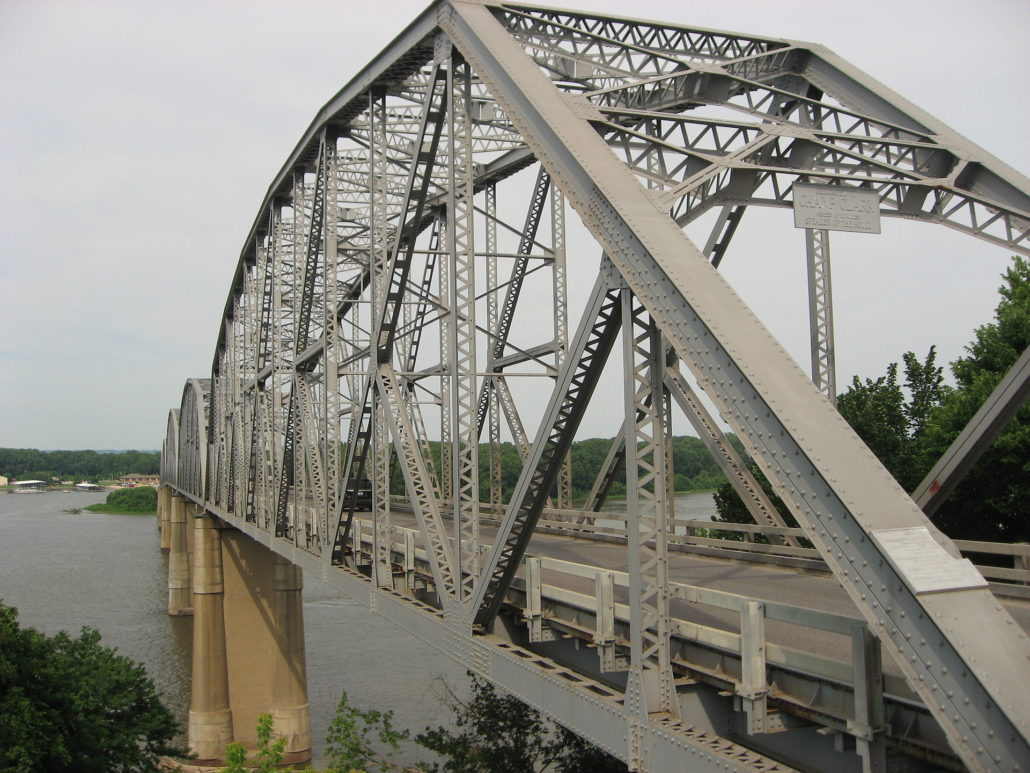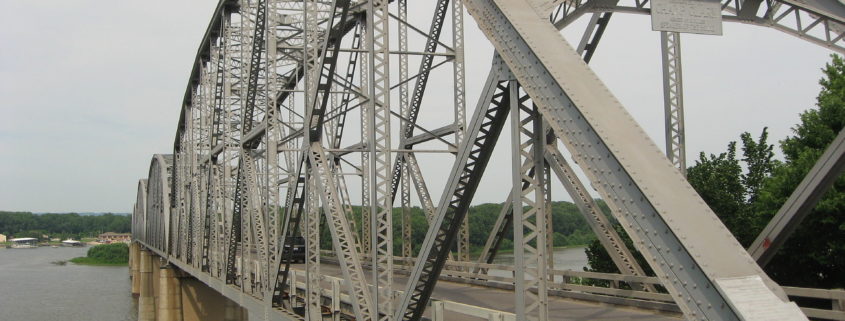Managing A Linear Project Schedule – Interview With A Senior Scheduler
A few minutes with a senior scheduler at Parsons
Andy Fairbairn has been a project scheduler since 2002. Educated at the University of Boulder, Colorado, Andy has spent his career with leading infrastructure construction companies such as Flatiron and Kiewit.
Andy is currently a senior scheduler in the estimating group at Parsons.
Q: Andy, what kinds of projects do you work on in your role as scheduler?
Andy: “I primarily work on linear infrastructure projects like roads and bridges. Although he laughs, “I’ve dabbled in wastewater.”

Image From Wikipedia: https://en.wikipedia.org/wiki/Champ_Clark_Bridge The Champ Clark Bridge is a five-span truss bridge over the Mississippi River connecting Louisiana, Missouri with the state of Illinois.
Q: How long have you been working on linear infrastructure projects?
Andy: “My first linear project was in 2002.”
Q: Andy, what are you working on right now, and are you at liberty to say?
Andy: “We’re bidding on the I-25 design/build and working on the Missouri bridge replacement project. I keep pretty busy.”
Q: Andy, what challenges do you find are unique to linear projects?
Andy: “Well, the stuff I deal with, in the bidding department, isn’t unique to linear projects. The needs we have go across all projects – to understand, plan and effectively communicate to the team.”
Q: What software tools have you used to manage linear project schedules?
Andy: “I primarily create the schedule in Primavera P6 and then transfer it into TILOS. Before I heard about TILOS I used to use something called Transcon Exposition, which I don’t think you can get anymore.”
Q: How did you find using these traditional project management software applications to manage the schedule of a linear project?
Andy: “In North America, most owner companies have a requirement to use P6, so all my jobs have been done in P6. There are some jobs where I haven’t had the time to develop the schedule in TILOS and have just done it in P6. It certainly makes communicating the schedule to the team much more difficult. My team is used to receiving the TILOS schedule and when they don’t get one, they sort of stare at me blankly, so I try to do one one every job.”
Q: How would you describe TILOS scheduling software?
Andy: “I would describe TILOS as the most effective scheduling tool that I have to communicate what our plan is to build work. It gives me the framework where I can graphically display our schedule, it lets me check my work, make sure I don’t have any glaring errors, and talk to the team about it easily. It’s not a 100 page plot coming out of P6.
Q: What would you tell anyone who is considering using TILOS, but hasn’t quite decided yet?
Andy “ I would certainly recommend TILOS. If they’re not using it, they are not getting the benefits of it as a tool in their scheduling tool-kit”
Q: What are your Favourite Features of TILOS?:
Andy: “Lately what I have been using a lot is the subproject functionality in TILOS. When you look at a highway interchange for instance, which is 6 different roads and an interchange, it is not necessarily all linear in nature, but TILOS lets me show each component as 6 different projects.”
I used this technique for the most complex freeway project we worked on recently – the I-395 project in Miami and it helped me account for all the details.”
About TILOS linear project planning software:
TILOS is the globe’s preferred linear project management software, trusted by 4 out of 5 industry leaders.
TILOS automates the linear scheduling method, and with it, many of the repetitive tasks associated with planning, updating and presenting a linear project. It’s intuitive visual interface connect the plan to the physical project, making it easy to optimize, update and present to various stakeholders.
Click here to request a free trial and demo of TILOS.


